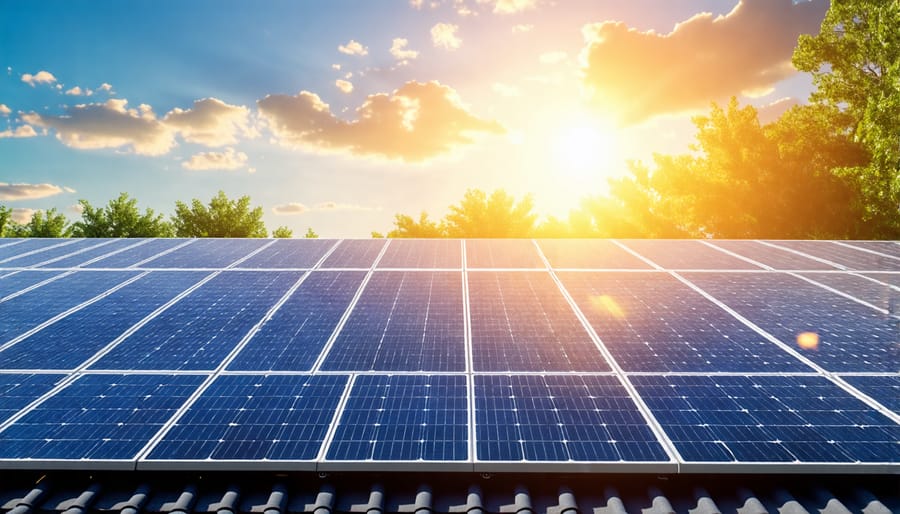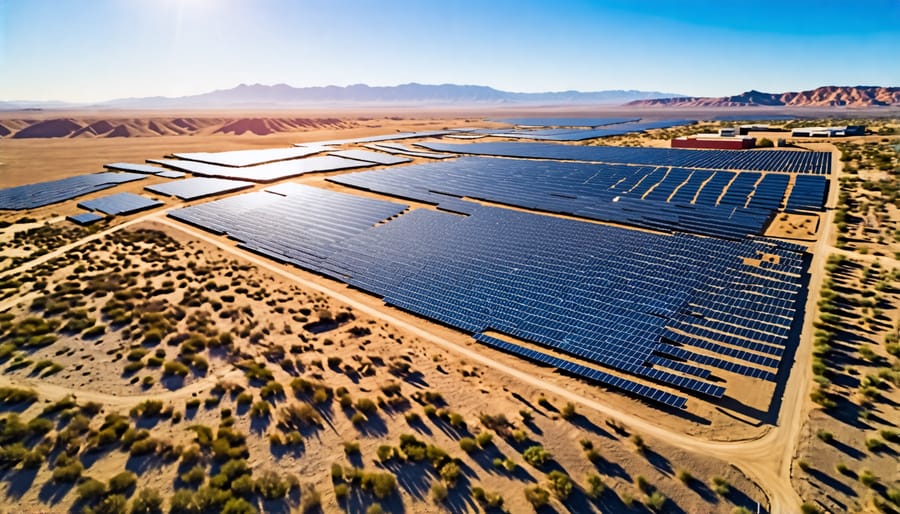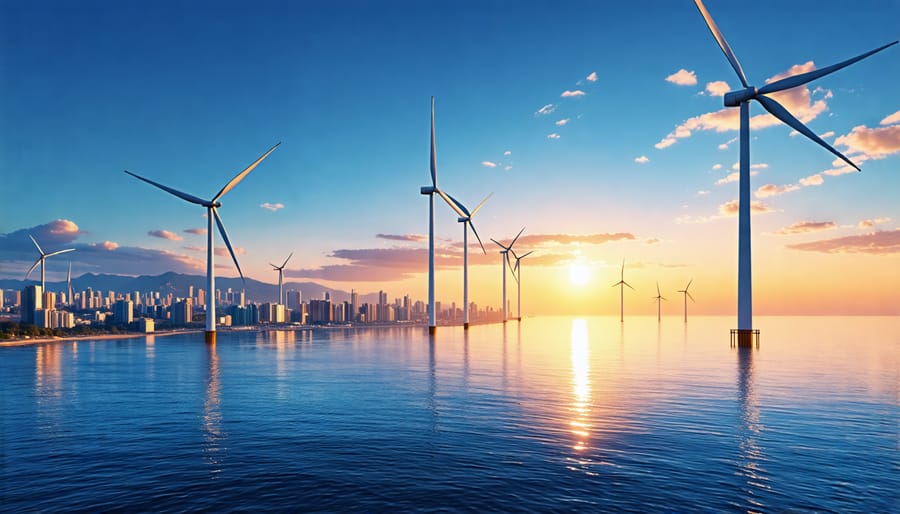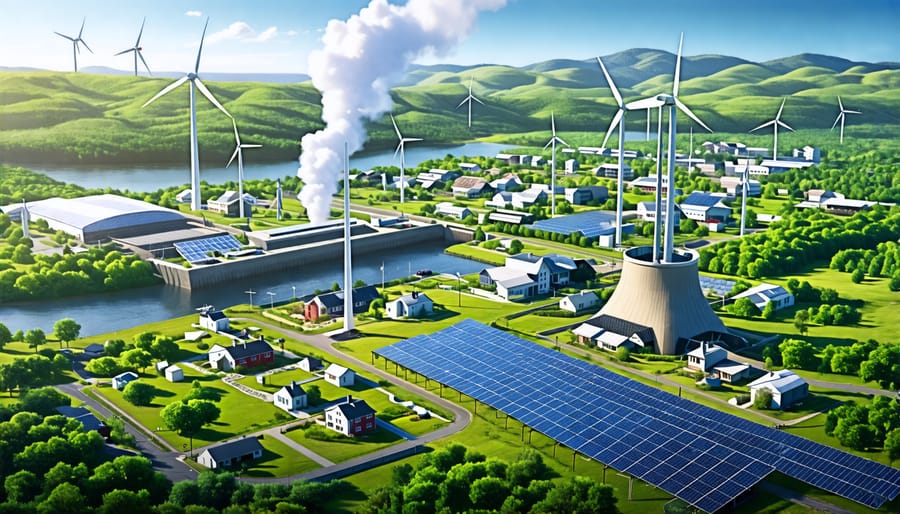Harnessing the boundless potential of renewable energy is critical to meeting humanity’s growing energy needs while protecting the planet. Renewable sources like solar, wind, hydropower, geothermal, and biomass offer clean, sustainable alternatives to finite fossil fuels. By capturing energy from continuously replenished natural processes, these technologies can power our world indefinitely. Immense progress is being made to improve the efficiency, scalability and affordability of renewable energy systems. Researchers and engineers are pushing the boundaries of what’s possible – from paper-thin solar cells to bladeless wind turbines to enhanced geothermal systems miles beneath the earth’s surface. The rapid pace of innovation is positioning renewables to outcompete traditional energy sources in more and more markets around the globe. As renewable energy solutions become increasingly viable, a future in which they dominate the world’s energy supply appears not only possible, but inevitable. With the promising developments of today paving the way, a clean energy revolution is on the horizon – one that can safeguard the environment and transform the world’s social and economic landscape. By embracing renewable energy’s immense potential, humanity can chart a course to a sustainable future of limitless possibility.
Solar Power
Residential Solar
Residential solar power has become increasingly popular as homeowners seek to reduce their carbon footprint and save on energy costs. Rooftop solar panels convert sunlight into electricity, allowing households to generate their own clean energy. These systems can be sized to meet a home’s energy needs and any excess power can often be sold back to the grid. Community solar projects offer an alternative for those who can’t install their own panels, allowing residents to subscribe to a shared solar farm and receive credits on their utility bills. While initial installation costs can be significant, many find that the long-term savings and environmental benefits make the investment worthwhile. Proper maintenance, such as regularly troubleshooting solar lights and panels, ensures optimal performance. As residential solar technology continues to advance and become more affordable, it has the potential to play a significant role in transitioning households towards renewable energy.

Utility-Scale Solar Farms
Utility-scale solar farms are massive installations that harness the sun’s energy to generate electricity for the power grid. Spanning hundreds of acres, these solar power plants utilize thousands of photovoltaic panels to convert sunlight into direct current (DC) electricity. The DC power is then converted to alternating current (AC) using inverters before being fed into the electrical grid for distribution to homes and businesses. Some solar farms also incorporate solar tracking systems that allow the panels to follow the sun’s movement, maximizing energy capture. As technology advances, innovative solutions like vertical agrivoltaic systems are being developed to optimize land use and boost the efficiency of solar power generation. With the increasing demand for clean energy, utility-scale solar farms play a crucial role in transitioning towards a more sustainable future, providing a reliable and renewable source of electricity to communities worldwide.

Wind Energy
Wind energy harnesses the power of moving air to generate electricity, with wind turbines serving as the iconic symbol of this renewable resource. Onshore wind farms, located on land, have been a mainstay of wind power generation for decades. These towering structures, often exceeding 100 meters in height, feature blades that rotate when caught by the wind, driving a generator to produce electricity. In recent years, offshore wind energy has emerged as a promising frontier. Offshore wind turbines are placed in bodies of water, typically in coastal areas with reliable wind patterns. These massive structures, some reaching over 200 meters tall, can capture the stronger and more consistent winds found at sea. Offshore wind farms have the potential to generate substantial amounts of clean energy, with countries like the United Kingdom, Germany, and China leading the way in offshore wind development. Dr. Sarah Johnson, a leading wind energy expert, explains, “Wind power has made remarkable strides in the past few decades. Improved turbine designs, larger blades, and advanced materials have significantly increased the efficiency and output of wind farms. With continued research and investment, wind energy has the potential to play a pivotal role in the global transition to a low-carbon future.” Several countries have emerged as leaders in wind power production. China, with its vast landmass and long coastlines, has the largest installed wind power capacity worldwide. The United States, particularly in states like Texas and Oklahoma, has also made significant investments in wind energy. European countries, such as Germany, Spain, and Denmark, have been pioneers in wind power adoption, with Denmark notably generating over half of its electricity from wind in recent years. As the world seeks to combat climate change and reduce reliance on fossil fuels, wind energy offers a promising path forward. Its potential for large-scale deployment, coupled with falling costs and technological advancements, positions wind power as a key component of a sustainable energy future.

Hydroelectric Power
Hydroelectric power harnesses the kinetic energy of moving water to generate electricity. In conventional hydropower systems, dams are built across rivers to create reservoirs. Water released from the reservoir flows through turbines, spinning them to drive generators and produce electricity. The amount of power generated depends on the volume of water flow and the height difference between the reservoir and the turbines. Run-of-river hydropower systems, on the other hand, divert a portion of a river’s flow through a canal or penstock to spin turbines without requiring a large reservoir. These systems have a smaller environmental footprint compared to dams. One of the main advantages of hydropower is its reliability and predictability. Unlike solar and wind energy, which are intermittent, hydropower can provide a steady baseload of electricity. Hydroelectric plants also have a long lifespan and low operational costs once built. However, building large dams can have significant environmental and social impacts. Flooding land for reservoirs can displace communities, disrupt ecosystems, and affect fish populations. Dams can also alter river flow patterns and water temperature, impacting aquatic life downstream. Addressing these challenges through careful planning, design, and mitigation measures is crucial for sustainable hydropower development. Despite these concerns, hydropower remains an important renewable energy source, accounting for about 16% of global electricity generation. Advances in turbine technology, fish passage systems, and environmental flow management are helping to minimize the ecological impacts of hydropower projects. As the world transitions to a low-carbon future, hydropower will continue to play a role in providing clean, reliable electricity.
Geothermal Energy
Geothermal energy harnesses the Earth’s internal heat to generate clean, renewable power. Deep beneath our feet, temperatures rise steadily, reaching scorching levels that can be tapped for electricity production. Geothermal power plants utilize this heat by drilling wells to access hot water and steam reservoirs, which then drive turbines to produce electricity. According to the U.S. Department of Energy, geothermal resources have the potential to supply more than 10% of the nation’s energy needs. While traditional geothermal plants rely on naturally occurring hydrothermal systems, researchers are exploring enhanced geothermal systems (EGS) to expand the technology’s reach. EGS involves fracturing hot, dry rock formations and circulating water through the cracks to create artificial reservoirs. “Enhanced geothermal systems could potentially provide access to a nearly unlimited supply of clean energy,” says Dr. Susan Petty, president of AltaRock Energy, a leading geothermal technology company. Geothermal energy offers several advantages over other renewables. It provides a stable, baseload power source unaffected by weather conditions or time of day. Additionally, geothermal plants have a small land footprint and emit minimal greenhouse gases. With continued research and investment, geothermal energy could play a significant role in the transition to a cleaner, more sustainable future.
Biomass Energy
Biomass energy harnesses the power of organic matter to generate renewable electricity and heat. This versatile energy source encompasses a wide range of materials, from wood pellets and agricultural waste to municipal solid waste and animal manure. When these organic substances are burned, they release energy that can be used to produce steam, driving turbines to generate electricity. Biogas is another promising form of biomass energy, produced when microorganisms break down organic matter in the absence of oxygen. This process, known as anaerobic digestion, occurs in facilities like landfills and wastewater treatment plants, capturing methane gas that would otherwise escape into the atmosphere. The collected biogas can then be used for heating, electricity generation, or even as a transportation fuel. Liquid biofuels, such as ethanol and biodiesel, offer a renewable alternative to traditional gasoline and diesel. Ethanol is typically made from corn or sugarcane, while biodiesel is derived from vegetable oils, animal fats, or recycled cooking oils. These biofuels can be blended with conventional fuels or used on their own in modified engines, reducing reliance on fossil fuels and lowering greenhouse gas emissions. As the demand for clean energy grows, biomass energy presents exciting opportunities for renewable energy careers and innovation. Researchers are continually exploring new ways to optimize biomass conversion processes, improve energy yields, and develop sustainable feedstock sources. With ongoing advancements, biomass energy has the potential to play a significant role in the transition to a low-carbon future.
The Future of Renewable Energy
The future of renewable energy is bright, with rapid advancements in technology and a growing global commitment to transitioning towards a clean energy economy. Emerging technologies like advanced solar cells, floating wind turbines, and enhanced geothermal systems are pushing the boundaries of what’s possible in harnessing nature’s power. Researchers are developing more efficient and cost-effective ways to capture, store, and distribute renewable energy, making it increasingly competitive with fossil fuels. One of the key challenges in the widespread adoption of renewables has been the intermittent nature of solar and wind power. However, breakthroughs in energy storage solutions, such as high-capacity batteries, hydrogen fuel cells, and pumped hydro storage, are helping to overcome this hurdle. These technologies allow excess energy generated during peak production times to be stored and used later when demand is high or when the sun isn’t shining, or the wind isn’t blowing. The shift towards a clean energy economy is not just an environmental imperative but also an economic opportunity. As countries around the world set ambitious targets to reduce greenhouse gas emissions, investments in renewable energy infrastructure and low-carbon energy solutions are creating millions of jobs and driving economic growth. Governments and businesses are recognizing the potential of renewables to not only combat climate change but also to increase energy security, reduce air pollution, and stimulate innovation. As we look to the future, it’s clear that renewable energy will play a crucial role in powering our world sustainably. With continued research, investment, and political will, we can accelerate the transition to a clean energy future that benefits both people and the planet.

